Farriery
Disclaimer: The information provided in this article is for advisory purposes only and is not intended to instruct professionals on how to perform their work. Hoof care should always be carried out by a qualified hoof care professional who can assess each equine’s individual needs and apply the appropriate techniques for their welfare and comfort.
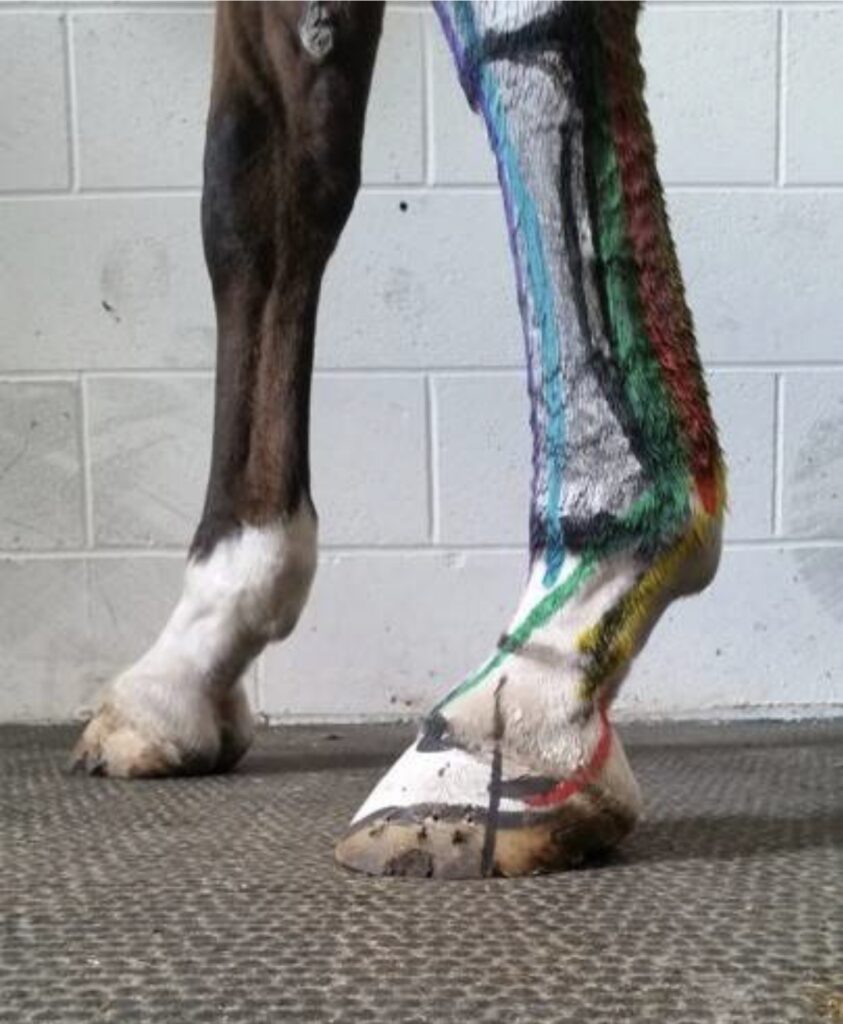
The Importance of Shoeing and Trimming for Senior Equines
As equines age, their bodies undergo significant changes, and their hooves are no exception. Just as dental care becomes increasingly vital for senior equines, regular and proper hoof care is equally essential. As farriers, we have a responsibility to adapt our approach to trimming and shoeing to support the aging equine, ensuring they remain comfortable, sound, and capable of performing their required tasks.
Aging and Its Effects on Hoof Structure
An equine’s hoof changes shape over time, growing longer and often widening as they age. The horn quality may deteriorate, becoming more brittle or weaker, making it more susceptible to cracks and imbalances. These changes, combined with the natural wear and tear from continued use, necessitate a more tailored approach to farriery.
Senior equines tend to develop lower heels and flatter soles due to the gradual loss of concavity in the foot. If left unchecked, this can lead to increased strain on tendons, ligaments, and joints, exacerbating issues like arthritis and navicular disease. Routine trimming and shoeing tailored to their needs help maintain proper hoof balance, reducing stress on aging limbs.
Increased Farrier Intervention for Senior Equines
Unlike younger equines, older ones often need more frequent and precise maintenance. Due to their reduced ability to self-trim through movement and natural wear, senior equines require a skilled farrier to:
- Maintain a balanced hoof shape to prevent undue strain on joints and tendons.
- Manage hoof angles to compensate for age-related changes in posture and movement.
- Choose the correct type of shoes or barefoot trimming approach to accommodate their workload and comfort.
- Address underlying conditions such as laminitis, arthritis, or chronic hoof cracks.

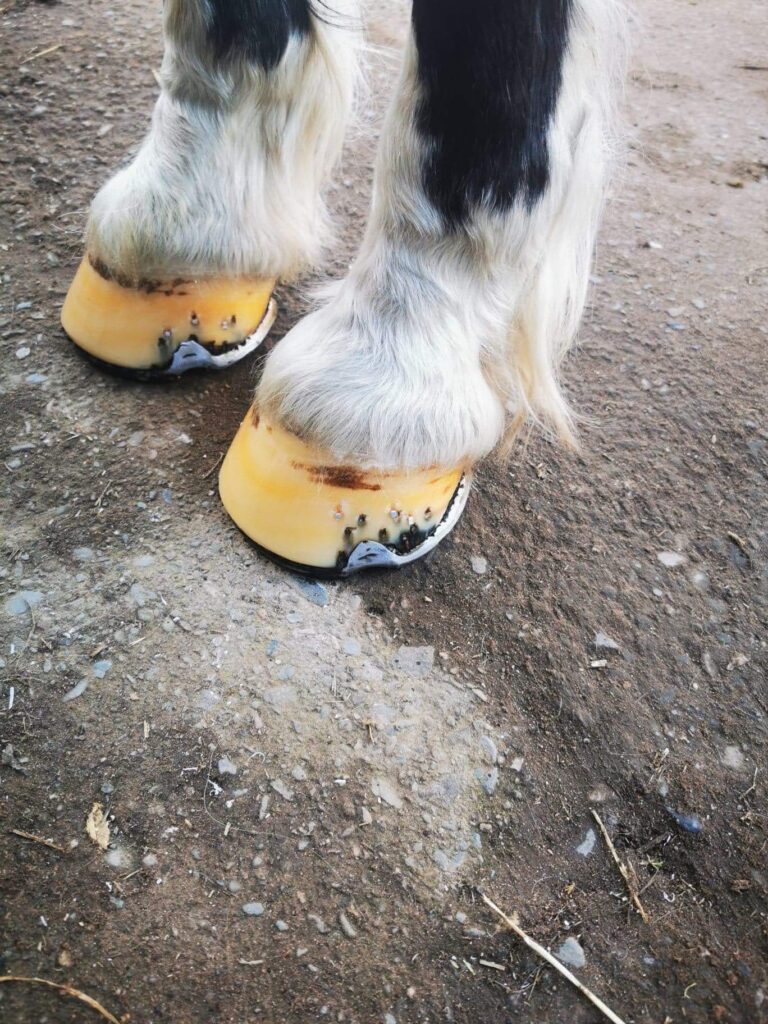
Neglecting these adjustments can lead to compensatory gait changes, further stressing an already aging musculoskeletal system.
The Effects of Modern Surfaces on Senior Equines
New riding and turnout surfaces, such as sand and rubber, have a notable biomechanical impact on equines of all ages. However, for senior equine, these effects are amplified due to the changes in their hoof structure and overall joint flexibility.
Different types of arena surfaces can have varied effects on the biomechanics of senior equines:
- Sand Surfaces – While providing a soft landing, deep or loose sand can cause excessive strain on the tendons and ligaments due to the lack of stability. It also encourages the hoof to sink, which can contribute to hyperextension of the fetlock.
- Rubber-Based Surfaces – These surfaces offer cushioning but can be too bouncy, leading to instability and making it harder for the equine to maintain natural movement. They may also create excessive stress on joints due to the added rebound effect.
- Clay and Dirt Arenas – These are more traditional surfaces that compact over time, offering better traction but can become slick when wet. Uneven wear and maintenance can lead to inconsistent footing, increasing the risk of slips or tendon strain.
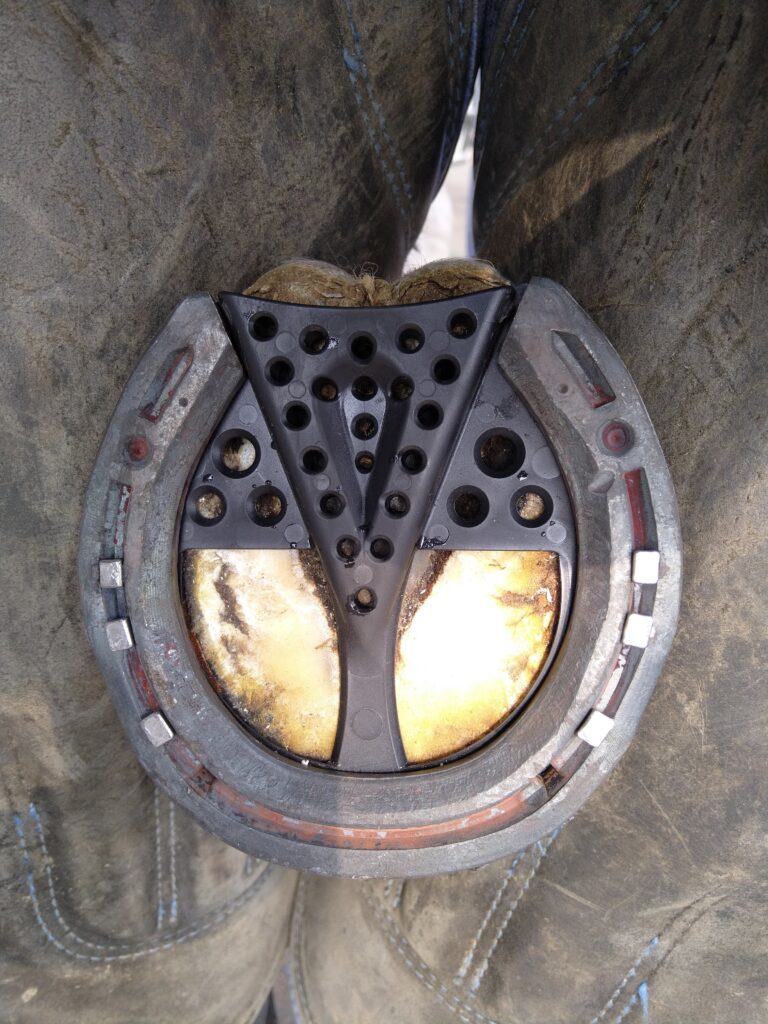
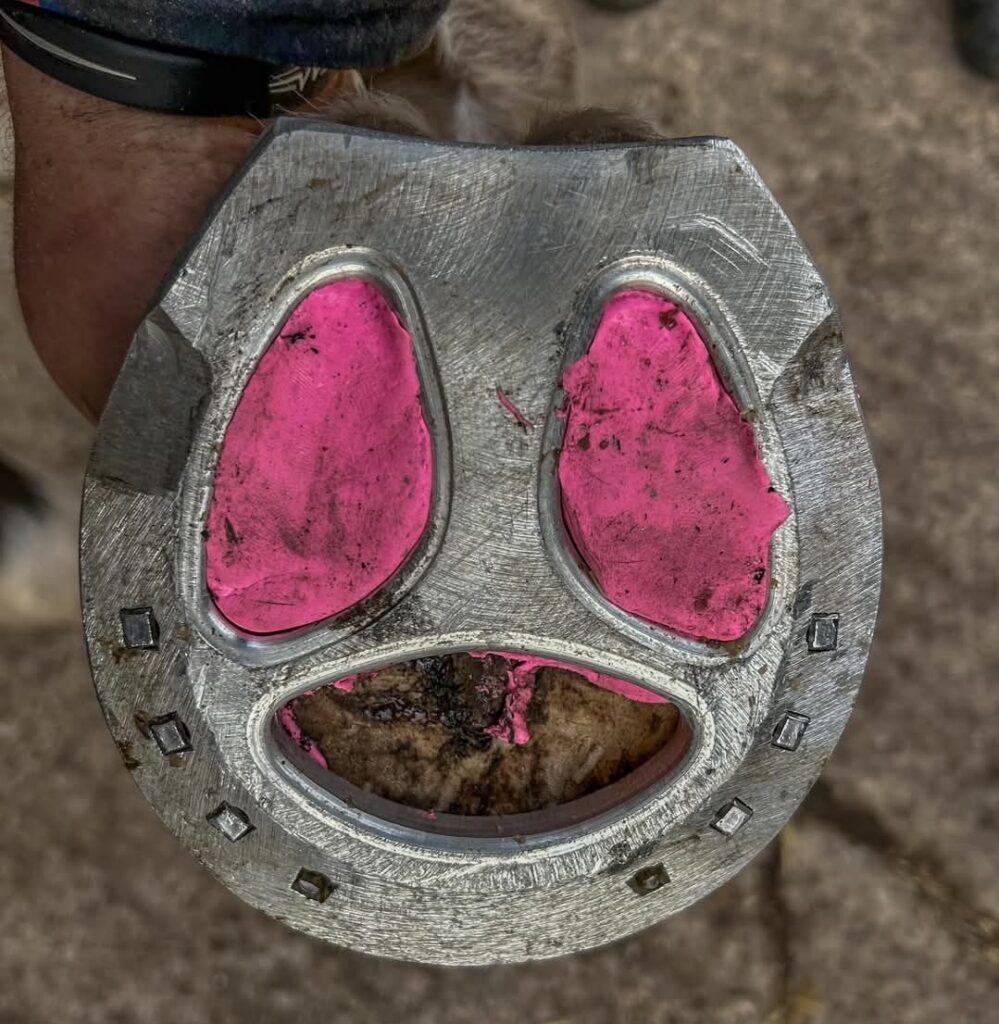
- Synthetic Blended Surfaces – Some arenas use a mix of fibers, sand, and wax to create a more consistent footing. While they help distribute impact, they can still promote unnatural movement patterns if too soft or too firm.
- Natural Grass – Well-maintained grass is one of the best surfaces for senior equines, as it provides natural cushioning and traction. The roots and soil structure help distribute weight evenly, reducing the risk of excessive strain on joints and tendons. However, natural grass footing must be properly maintained to avoid uneven terrain, mud, or excessive hardness in dry conditions, which could lead to discomfort or injury.
Sand and rubber-based surfaces can cause an equine to lose its natural traction and proprioception, leading to increased instability. Unlike firmer, natural ground, these synthetic surfaces allow the hoof to sink in deeper, altering the equine’s natural movement pattern. Over time, this can lead to hyperextension of the fetlock joint, which is already at greater risk due to the longer and wider hooves seen in senior equines.
When hyperextension occurs repeatedly, it strains the suspensory ligament and deep digital flexor tendon, increasing the risk of injury. With a senior equine’s hoof being naturally longer, the leverage on these structures is magnified, causing additional discomfort and wear on the joints.
How Farriers Can Help Mitigate These Issues
To support senior equines working on modern surfaces, farriers must:
- Trim more frequently to prevent excess hoof length from exacerbating hyperextension.
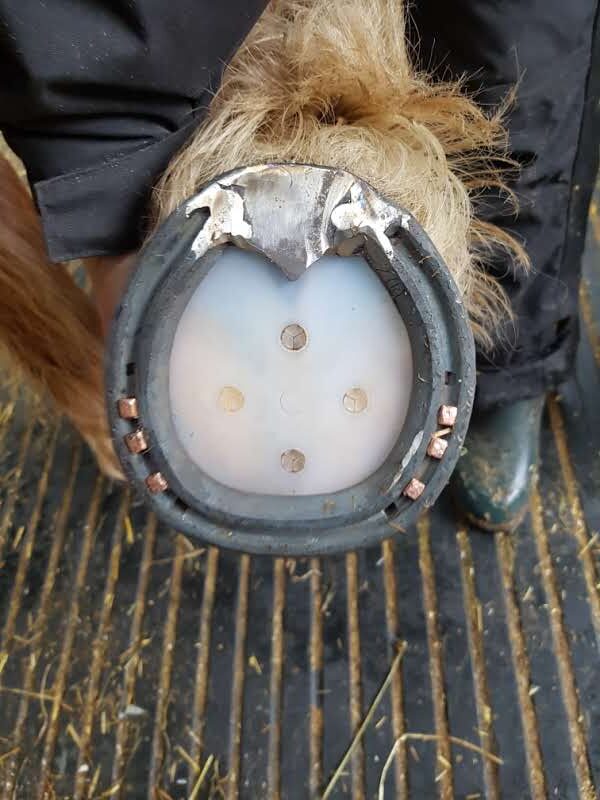

- Use supportive shoeing techniques, such as heel support and breakover adjustments, to reduce strain on tendons and ligaments.
- Consider materials that enhance grip, such as specific shoe treads or synthetic pads, to prevent slipping and instability.
- Adjust hoof angles to compensate for the altered mechanics induced by soft footing.
- Utilize SSADL-endorsed remedial and therapeutic shoeing options to ensure senior equines receive the highest level of hoof care.
By proactively addressing these issues, we can help senior equines maintain soundness and longevity in their careers, whether they are still in competition, light work, or simply enjoying retirement.
Supporting Senior Equine Welfare Through SSADL Concepts
As a farrier, I support the SSADL concepts of welfare, which allow senior equines to benefit from all types of remedial and therapeutic shoeing.
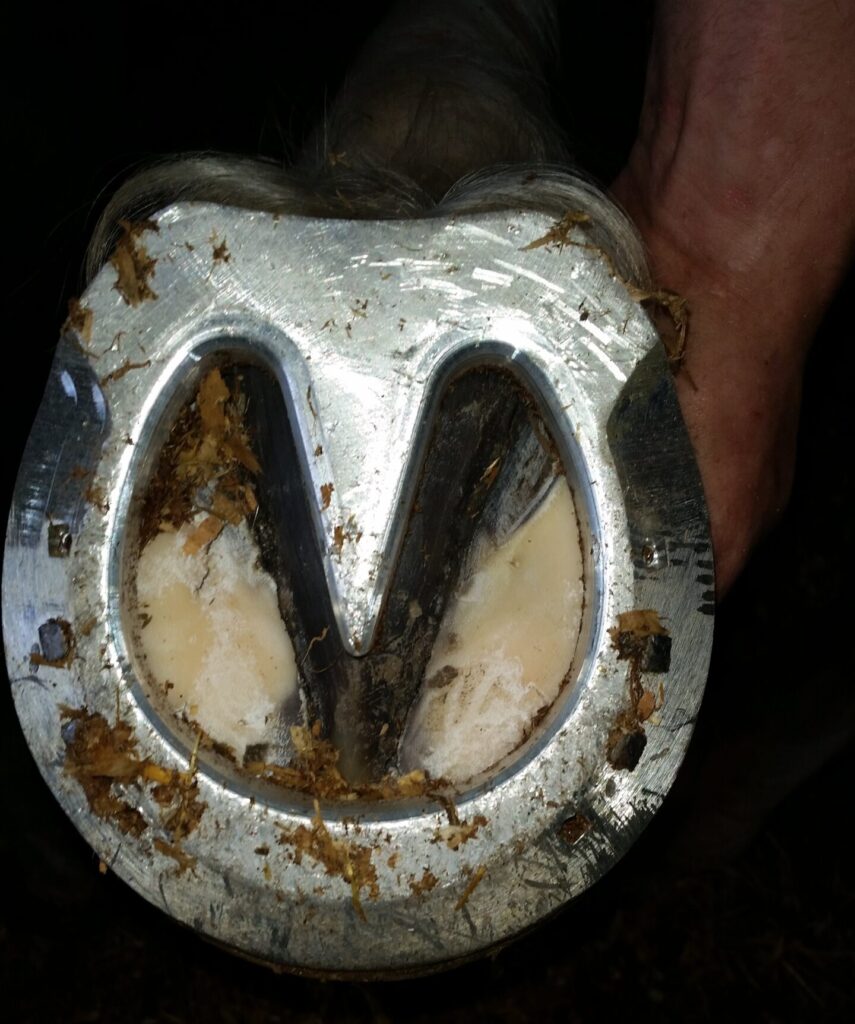
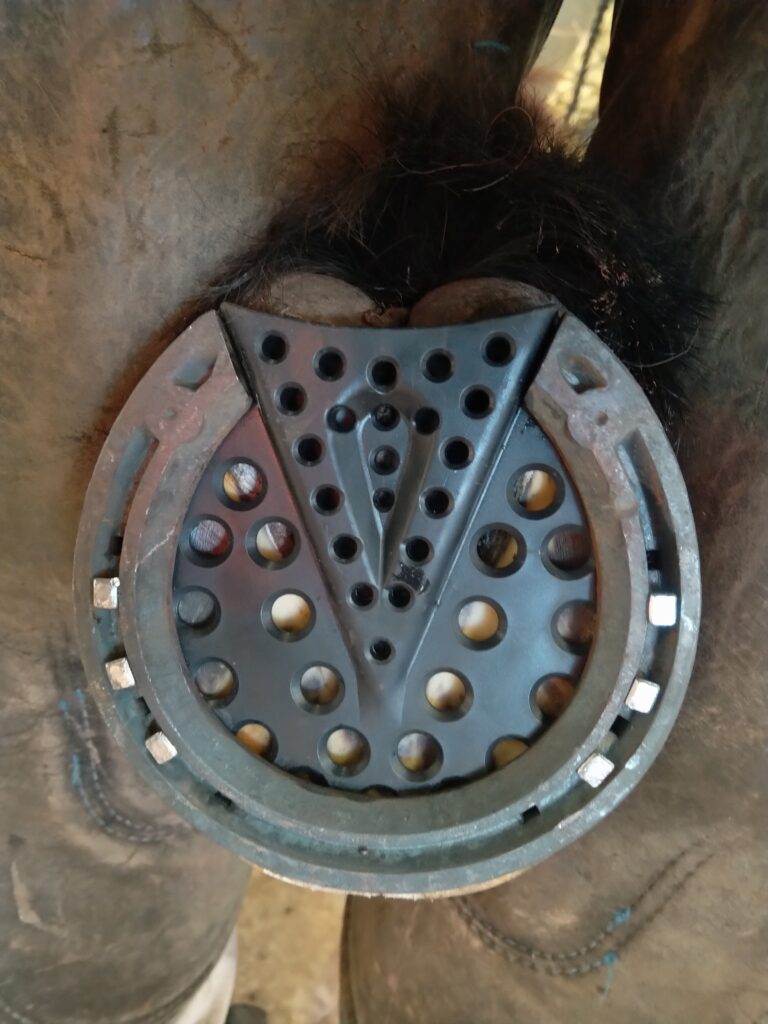
These concepts advocate for the use of advanced materials and techniques, such as plastic shoes, supportive orthotics, and customized therapeutic solutions. Ensuring that aging equines remain happy, active, and comfortable. By embracing these welfare-driven approaches, we can prolong the usability of senior equines while enhancing their overall quality of life.
Conclusion
The needs of a senior equine are unique and require a more attentive and adaptive farrier approach. With age-related changes in hoof structure, increased risk of hyperextension on modern surfaces, and the ongoing demands we place on these animals, it is essential that we prioritize proper shoeing and trimming. A well-maintained hoof not only prolongs the equine’s usability but also enhances their comfort and overall well-being in their later years. As farriers, we must remain vigilant, continually refining our techniques to meet the evolving needs of senior equines while supporting SSADL welfare principles to keep them active and comfortable.
